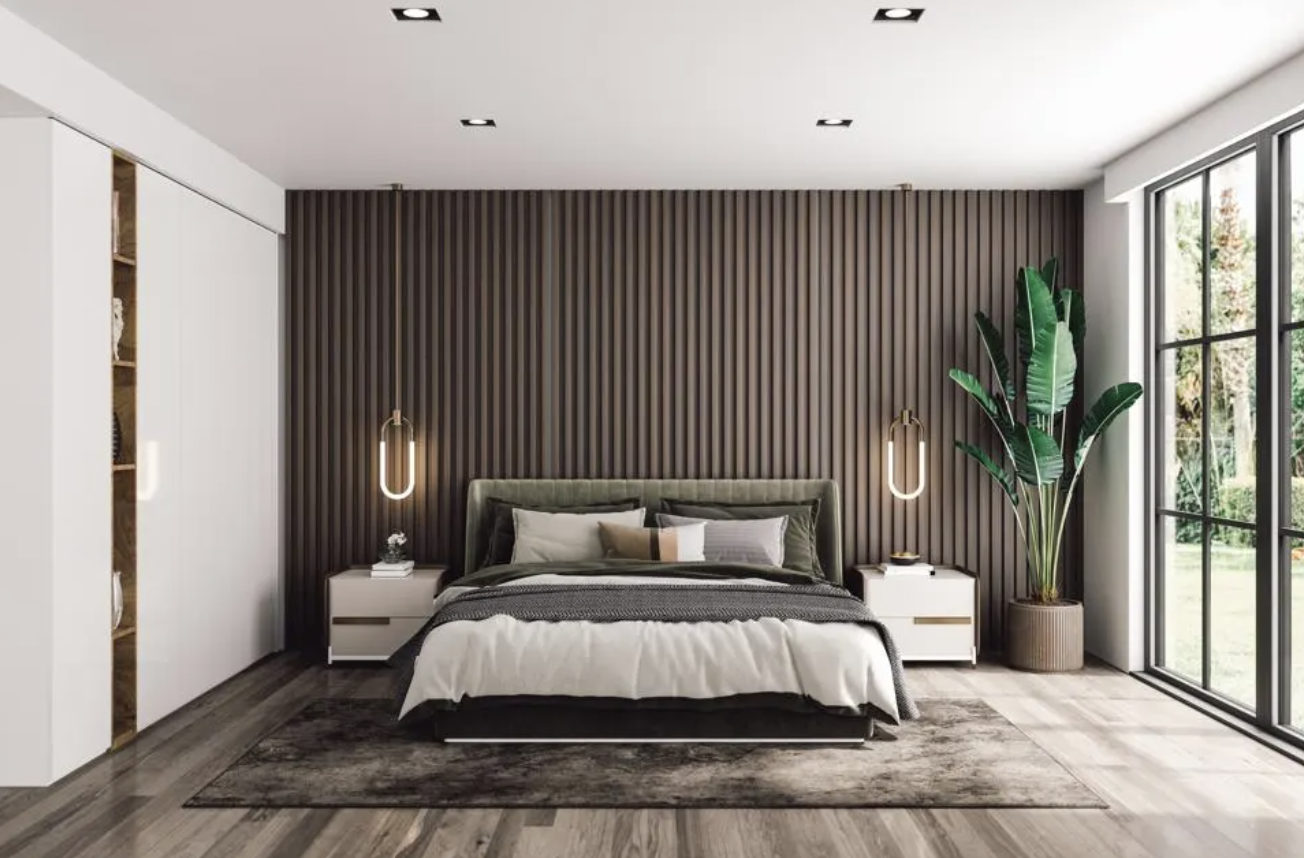Article & photo courtesy of Forbes
With the prevalence of TikTok and Instagram, every third person decorating a home feels they are a design expert. While all of these posts and videos are a fantastic source of inspiration, it does not necessarily mean these rooms are well-designed. It takes the eye and experience of a professional interior designer to truly do the job right.
Perhaps more importantly, interior designers know what mistakes to avoid. It’s often the smaller things that have the biggest impact. Here are ten things an interior designer would never do.
Put The Bed In The Wrong Place
Bad bed placement ruins the entire flow of a room. One of the most common examples of this is putting a bed in a corner. It instantly turns a small room into a college dorm. This often happens when the bed is too large for the space. Instead, go with a smaller centered bed or use a larger bed and use one nightstand. Nightstands built into the headboard are another option, especially in a modern space.
But this isn’t the only example of bad bed placement. Amanda Leigh and Taylor Hahn of House of Rolison tell me they would never put a bed in the middle of a room or on a floating wall. “It restricts flow and detracts from the calm aesthetic of the space.”
Use Faux Finishes
Faux finishes have been a major trend in recent years. While some homeowners and developers love this—designers feel otherwise. Jesse Rudolph and Joelle Kutner at Ome Dezin particularly dislike faux marble made from porcelain. “The real thing always looks better, especially in high-traffic areas.”
Another example of this is using real and faux flooring in the same space explains Susan Yeley, Creative Director and owner of Indiana-based design firm Susan Yeley . “Think LVP next to real wood floors, or fake wood tile next to real wood paneling. The juxtaposition of the real will make the fake look faker and the real lose its impact.”
Forgo Comfort For Style
As important as aesthetics are when decorating, if a sofa is too stiff or those slipcovers require dry cleaning and there’s a dog in the home—designers say it’s a big no. “Interior design is not just about creating visually pleasing spaces; it’s also about creating functional, livable environments,” says Gardner. “A beautifully designed room is worthless if it’s uncomfortable to spend time in. It’s essential to strike a balance between form and function, ensuring that the design not only looks great but also works for the way we live our lives.”
Purchase Dark Brown Furniture
From sofas to dining chairs and tables, dark brown furniture has been a major trend for years. However, many designers tell me it looks old and tired. “Dark brown furniture is done,” says interior designer Kate Dawson.
However, if you’re currently stuck with dark wood—don’t fret. It’s an easy fix, “If you have it left over, and don’t want to invest in all new pieces, painting them white (or another accent color) can completely transform your old brown piece into a chic contemporary piece! Never underestimate the magic of paint! It’s a decorator’s miracle!”
Install A Television Over The Fireplace
Like dark brown furniture, installing a television over the fireplace is also a look that’s become dated. Designers find it ruins the proportions of the room and detracts from the beauty of the fireplace itself. Yeley tells me, “The black rectangle of the television is almost always bigger than the black rectangle of the firebox, making the whole vignette top-heavy. If your firebox is set in a dark surround, you can offset that effect.”
If a television must be installed over the fireplace because there’s absolutely no other way to arrange the room, going with a Samsung Frame TV is the best option. “Those actually look like real art when you are not using it as a television. They’re kind of miraculous,” reveals Dawson.
Choose The Wrong Sized Rug
A good rug rarely comes cheap, so many people scrimp by buying one that’s too small for the room. Rudolph and Kutner advise their clients not to go down this path, “We would never use a rug that’s too small for a space because it makes the room look smaller.”
If a larger rug is out of the budget, it’s better to wait for a sale or choose a synthetic material rather than a smaller rug.
Make Mistakes With Window Treatments
Many people approach window treatments as an afterthought. However, Dawson tells me they are essential to make a room complete. “A room without curtain panels is like a present without a bow. Something is missing. 99.9 percent of rooms need curtains.”
She suggests hanging curtains as high as possible, even up to the crown molding (if there is molding). “In addition to hanging them higher than the actual frame, they should also be hung wider than the window (assuming there’s room). I like to hang them a good 10 to 12 inches out from the frame—when the space allows it. This immediately makes the room feel bigger and brighter because the eye is tricked into thinking that the entire space is a window.”
The designer would also never install draped curtains with a valance. “Keep the panels stationary, and make sure the bottom edge is either kissing the floor or pooling slightly on the floor. Anything higher than that is going to look cheap and poorly designed.”
Lastly, she would never opt for curtains with grommets. “It looks cheap and like a college dorm.”
Block A View
While not every home has a gorgeous view—there’s still never an excuse to block a window, according to Andrea DeRosa, principal designer and cofounder of Avenue Interior Design. “If you can at all avoid blocking a window—even partially—do so. Nothing makes a space feel crowded and overlooked like a partially blocked window.”
Another example of this is installing a stove in front of a window. “This is a recipe for disaster and something we would never do. Not only will it block the views and make it difficult to clean the window, but it is a potential safety hazard,” explain Leigh and Hahn.
Color Block In Highly Contrasting Colors
Color blocking has been a major trend in recent years, but it’s easy to make mistakes with. DeRosa suggests avoiding the temptation to color block with highly contrasting colors. “Even if you are looking to infuse excitement, we always suggest there is power in pulling back. It may be tempting to color block an interior, but generally, it’s a trend that is hard to execute well, especially if the colors are high contrast. Often the results yield a disjointed personality unless the colors are in perfect harmony. “Instead, opt for a single color for walls of the space and layer in color through upholstery, window treatments, or artwork.”

